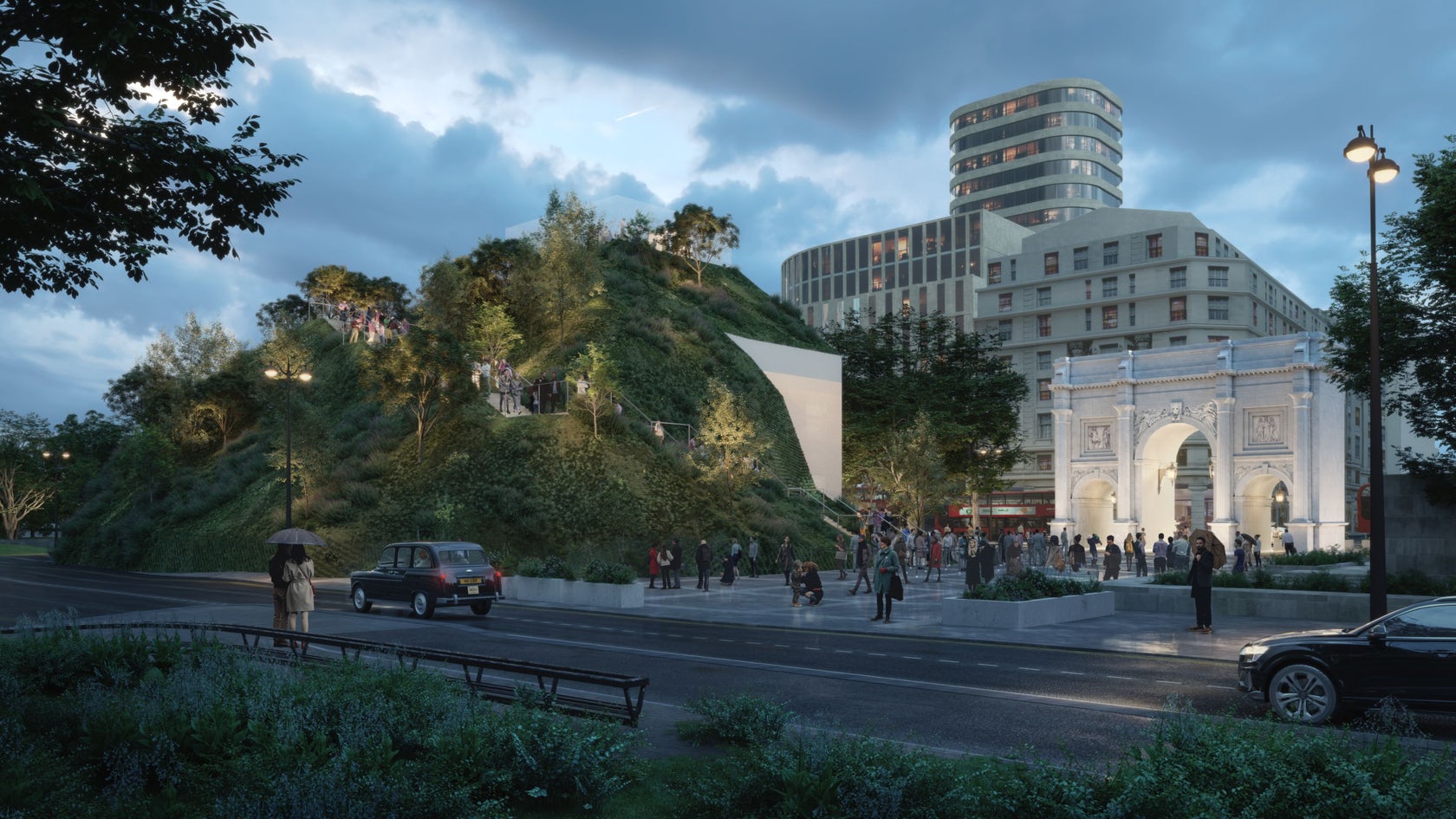Call for entries: The 14th Architizer A+Awards celebrates architecture's new era of craft. Apply for publication online and in print by submitting your projects before the Main Entry Deadline on December 12th!
A hallmark of the postwar construction boom, the sleek surface of glazed brick is recognizable in thousands of apartment blocks, schools, libraries, and industrial offices from the 1950s and 60s. On a technical level, glazed brick most often refers to ceramic glazed brick, where a ceramic surface is applied to the exterior. As opposed to traditional brick surfaces, ceramic glazing offers a multitude of benefits including easy cleaning, durability, and polychromatic production. In the postwar era, white glazed brick in particular was valued as an embodiment of modern principles; its glow contrasted with smoke-stained cities.
Unlike glazed brick, traditional brick masonry construction has the ability to breathe, intaking and releasing moisture with fluctuations in atmospheric humidity. Glazed brick interrupts the process by finishing the exterior surface, limiting the ability to expel trapped moisture. For this reason, it is particularly important for glazed brick walls to have proper drainage to maximize the life of the material. Improper construction or maintenance of glazed brick can lead to serious damage and billowing costs necessary to reskin external façades.
Owing to their varicolored properties and wide variety of shapes, glazed brick was championed by postmodern architects. John Outram Associate’s Isle of Dogs Pumping Station in London has striations of glazed brick and the first floor of Michael Grave’s St. Coletta of Greater Washington is wrapped brightly in a blue gaze. As contemporary architects increasingly play with texture and cautiously embrace postmodern aesthetics, glazed brick is poised for a comeback.
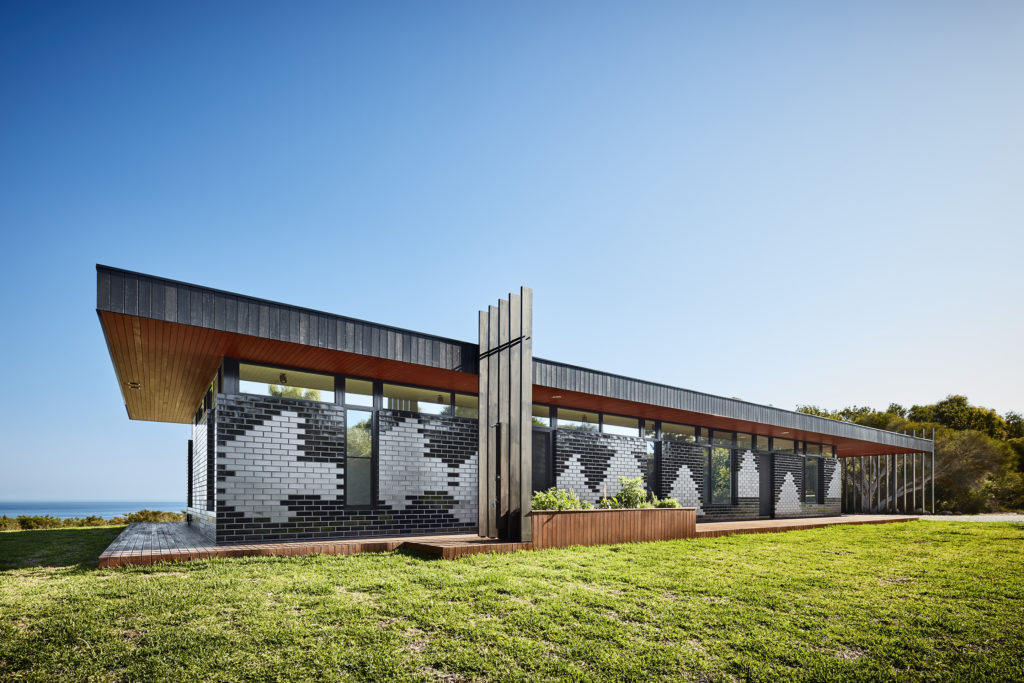
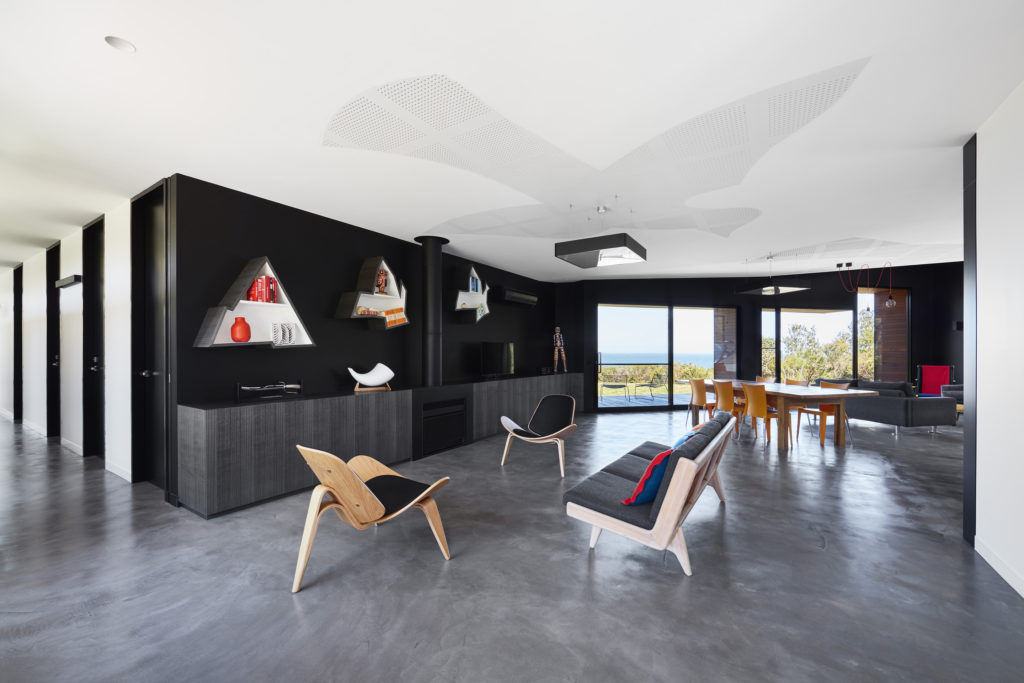 Waratah Bay House by Hayne Wadley Architecture, Waratah Bay, Australia
Waratah Bay House by Hayne Wadley Architecture, Waratah Bay, Australia
The impetus to build a new house over Waratah Bay came from the owner’s desire to better capture ocean views. Working from the existing slab of the previous house on the site, Hayne Wadley Architecture created a wing plan that opens to the bay views. The eye-catching glazed brick walls, with a snakeskin like appearance, interpret a pattern from M.C. Escher’s ‘Metamorphosis III,’ which is echoed in the ceiling. A lumber deck surrounds the house and contrasts with the black glazed brick.
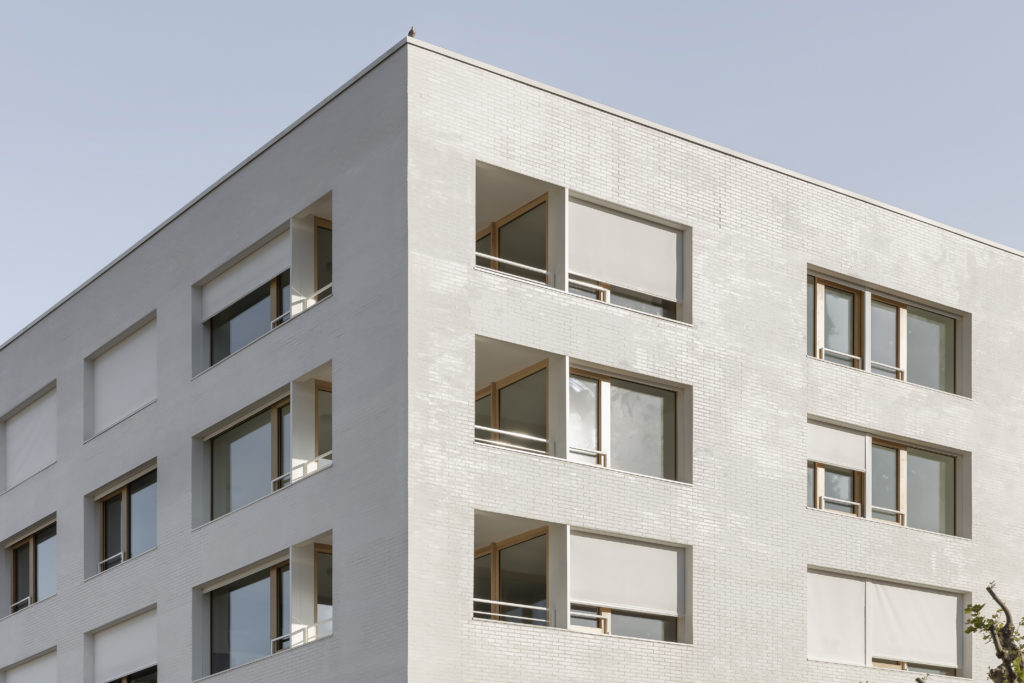
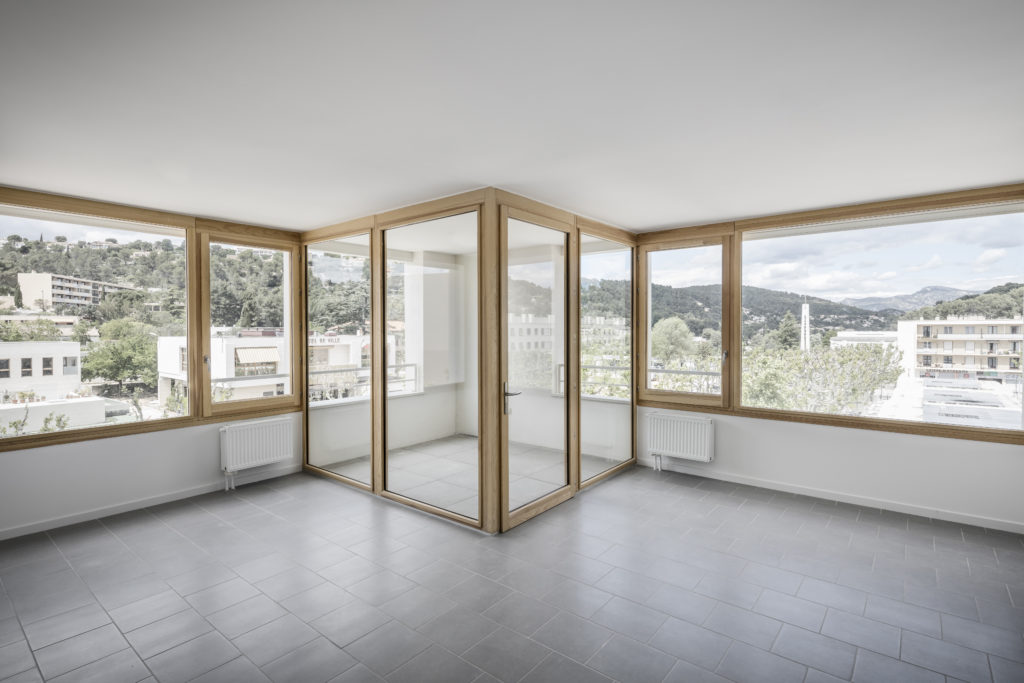
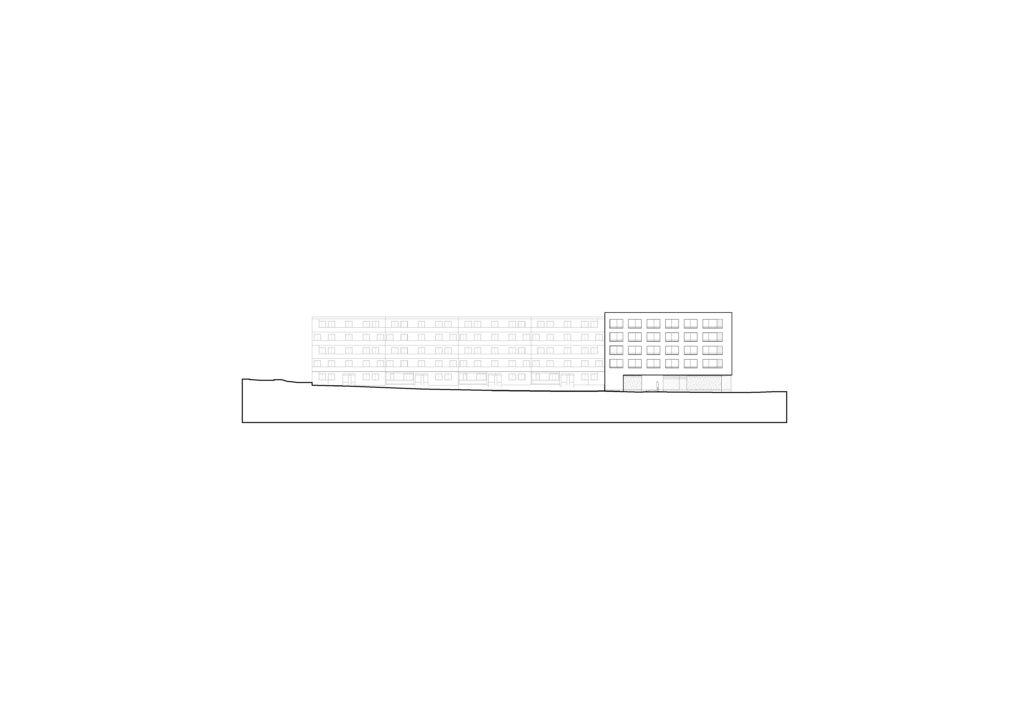 Logements Monfleuri Social Housing by Atelier Stéphane Fernandez, Carnoux-en-Provence, France
Logements Monfleuri Social Housing by Atelier Stéphane Fernandez, Carnoux-en-Provence, France
A spacious five-story social housing development in the center of Carnoux, the Logements Monfleuri embraces white glazed brick as means to create a unique identity for the building. The façade facing a public square is sheathed in white brick, while the other sides of the building utilize a more muted grey concrete. Each apartment has large windows, that punctuate the façade and lend a rhythm to the construction.
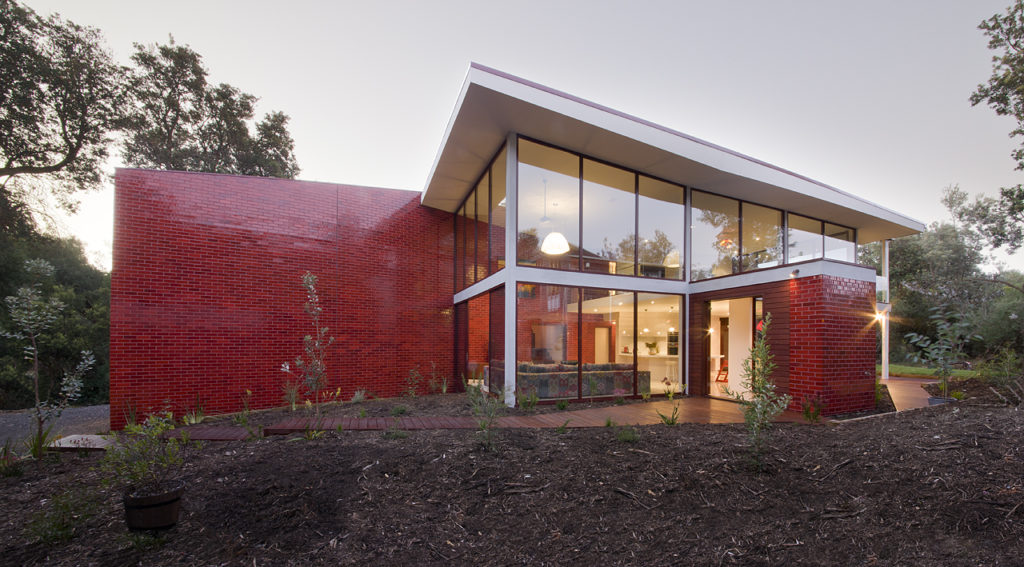
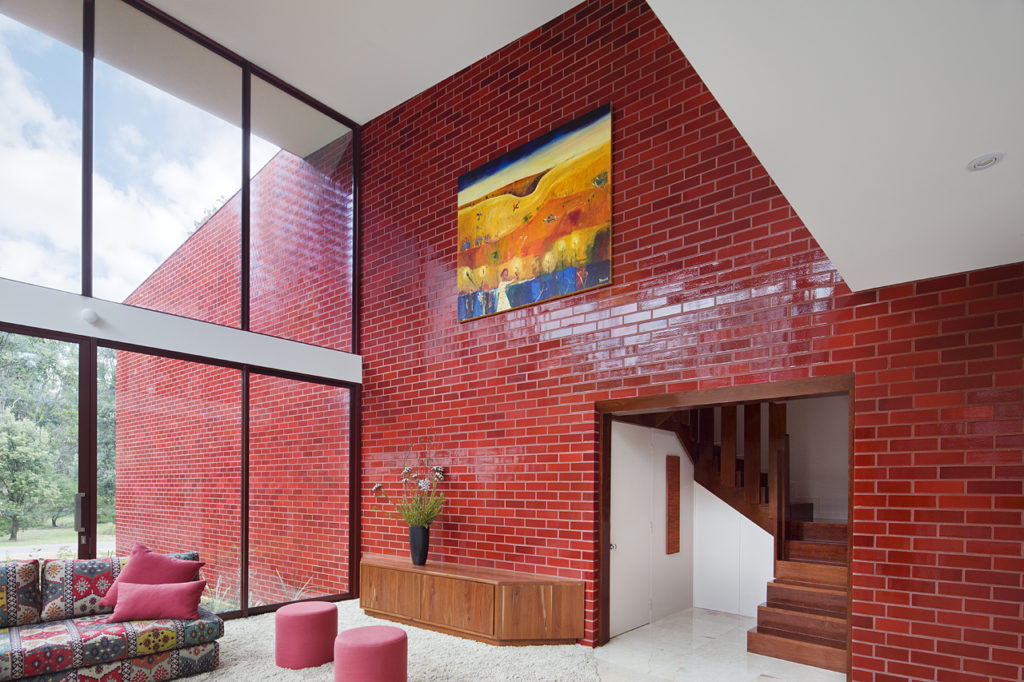
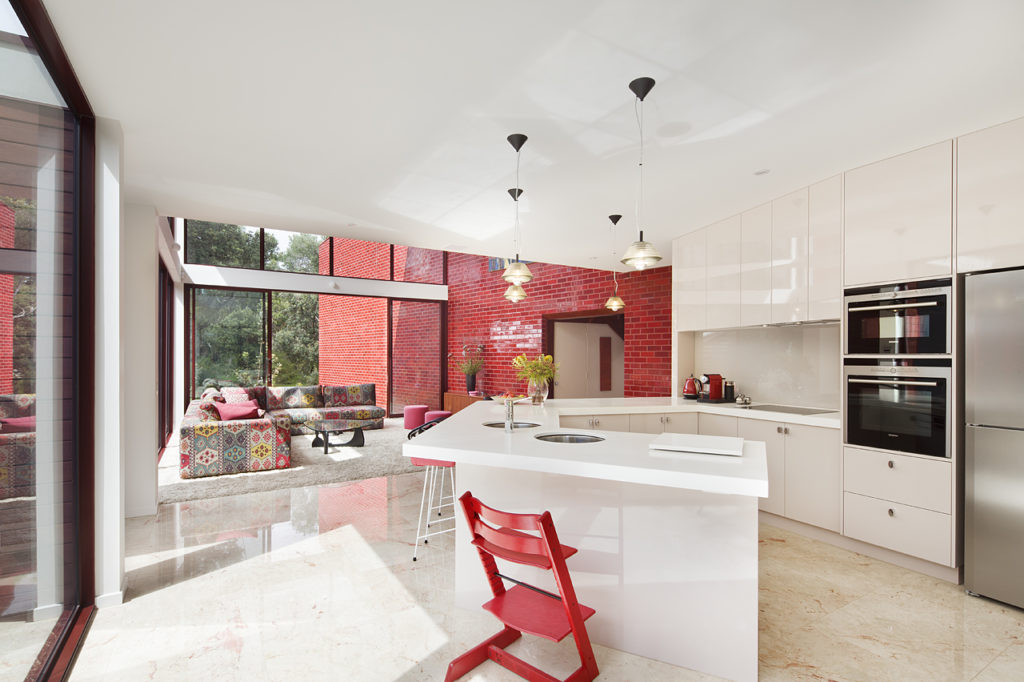 Finn House by WOWOWA Architecture, Silverleaves, Australia
Finn House by WOWOWA Architecture, Silverleaves, Australia
A fever dream in firehouse red, Finn House is the embodiment of a the client’s request for a “grand gesture on limited means.” Bright red walls continue through the inside, covering a two-story expanse in the living room opposite an expanse of windows, and surfacing the upstairs hallway. Complementing and highlighting the red brick, the interior is painted in white with neutral colored stone floors.
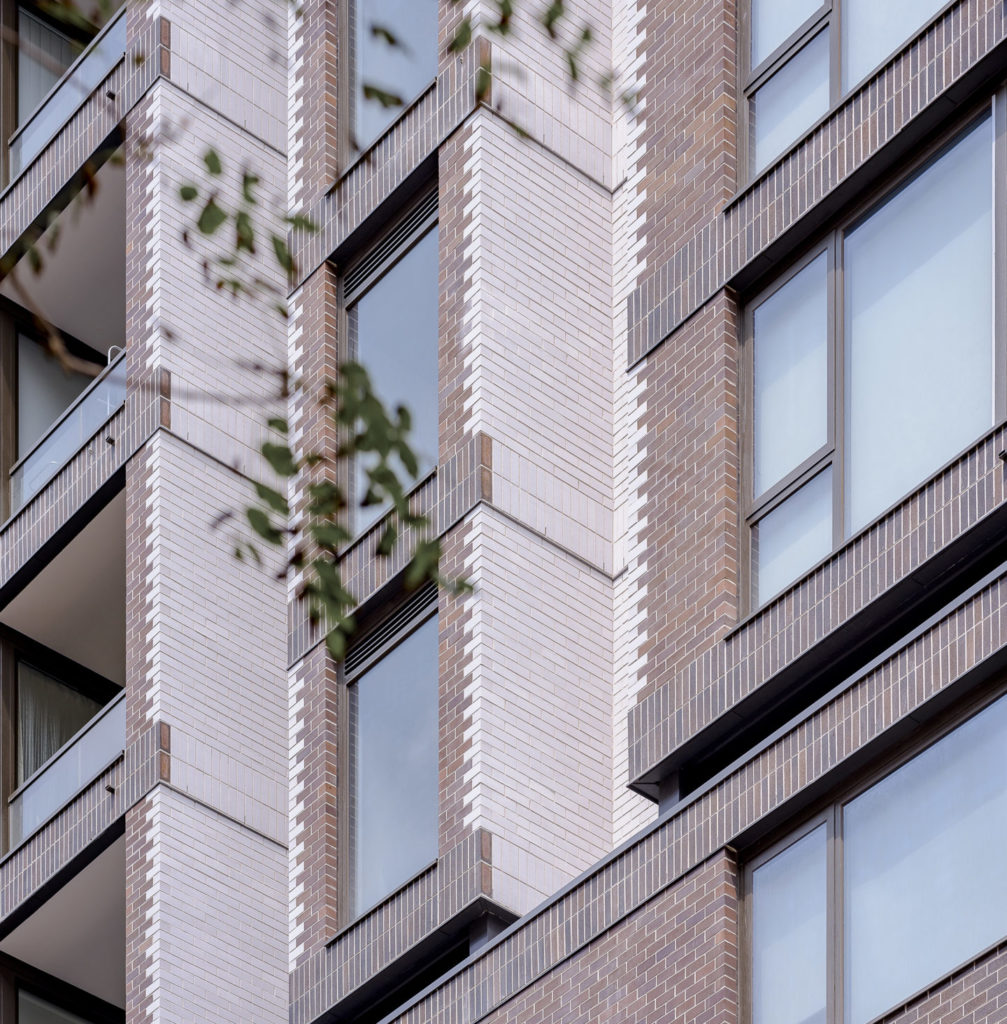
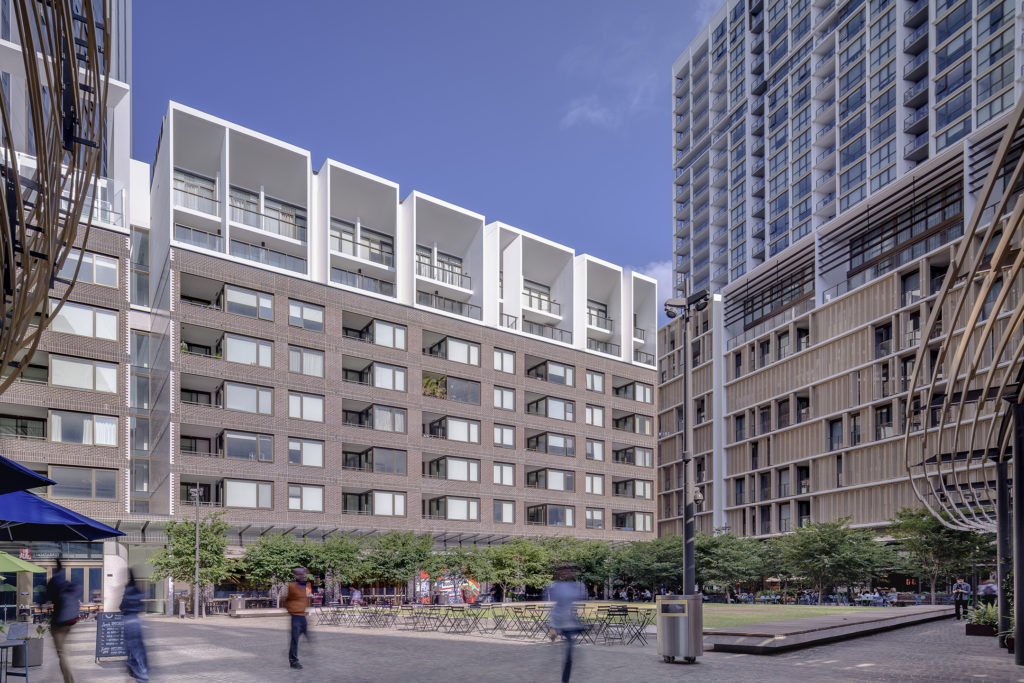 Darling Square North by Tzannes, Sydney, Australia
Darling Square North by Tzannes, Sydney, Australia
White glazed bricks pattern the façade of the Darling Square North Residential Development, forming a sawtooth design on the sides of projecting windows. The new complex includes 577 apartments across several towers with additional space for shopping and restaurants. Primary materials include brick, concrete, and glass, a palette informed by the industrial aesthetics of the surrounding neighborhood. Particular attention to solar ecliptic, resulting in northern oriented apartments, ensures natural interior illumination.
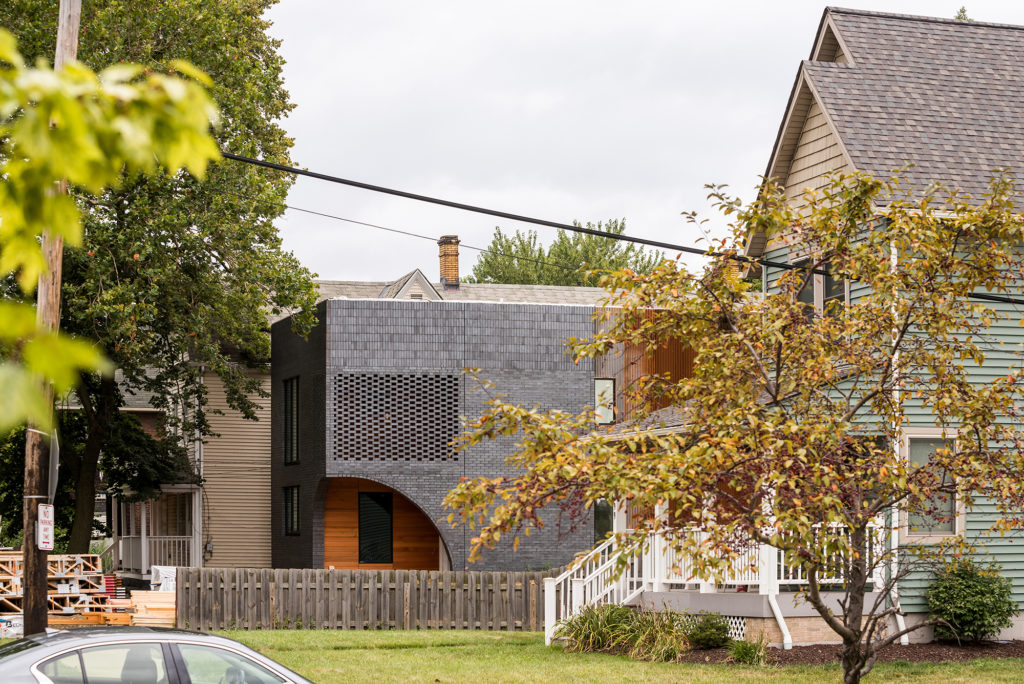
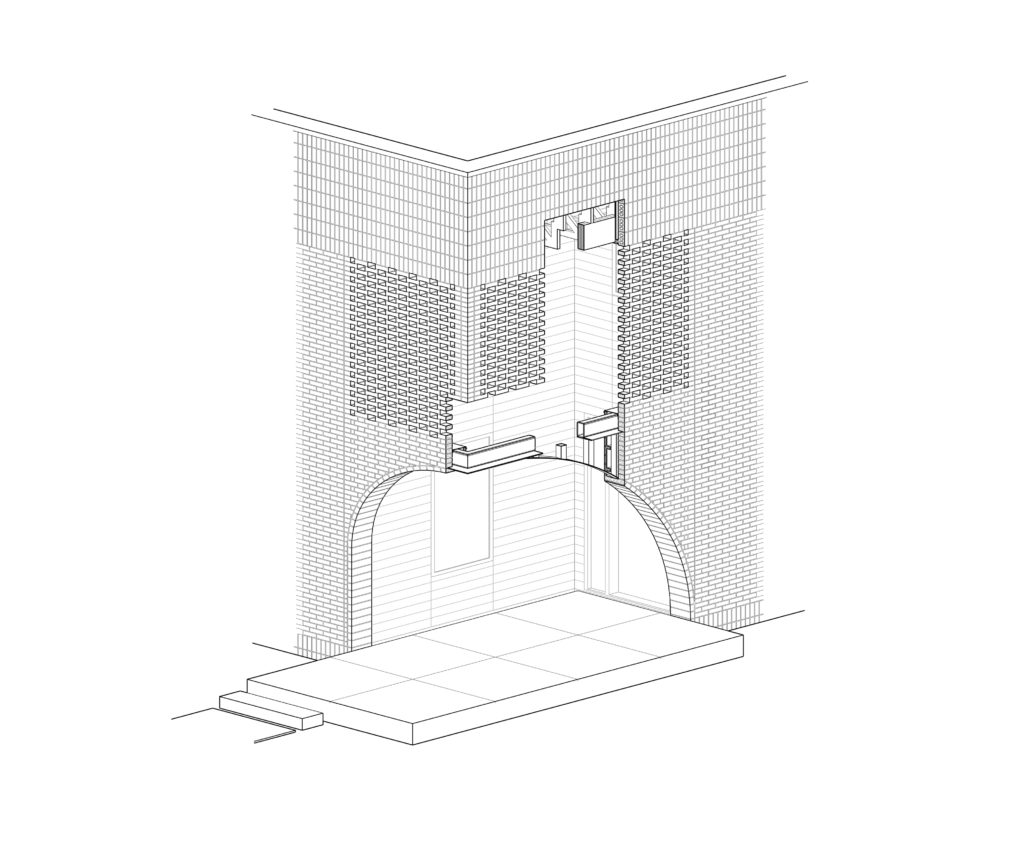 HS Residence by Horton Harper Architects, Cleveland, OH
HS Residence by Horton Harper Architects, Cleveland, OH
In a neighborhood of clapboard Victorian houses, the inky glazed brick of HS Residence makes a statement. However, Horton Harper Architects envision the brick exterior as a homage to the masonry construction of churches in the surrounding neighborhood and in line with the traditions of Cleveland, a city renowned for its industrial heritage and architecture. A distinctive feature is the entrance portal, formed with two intersecting brick arches.
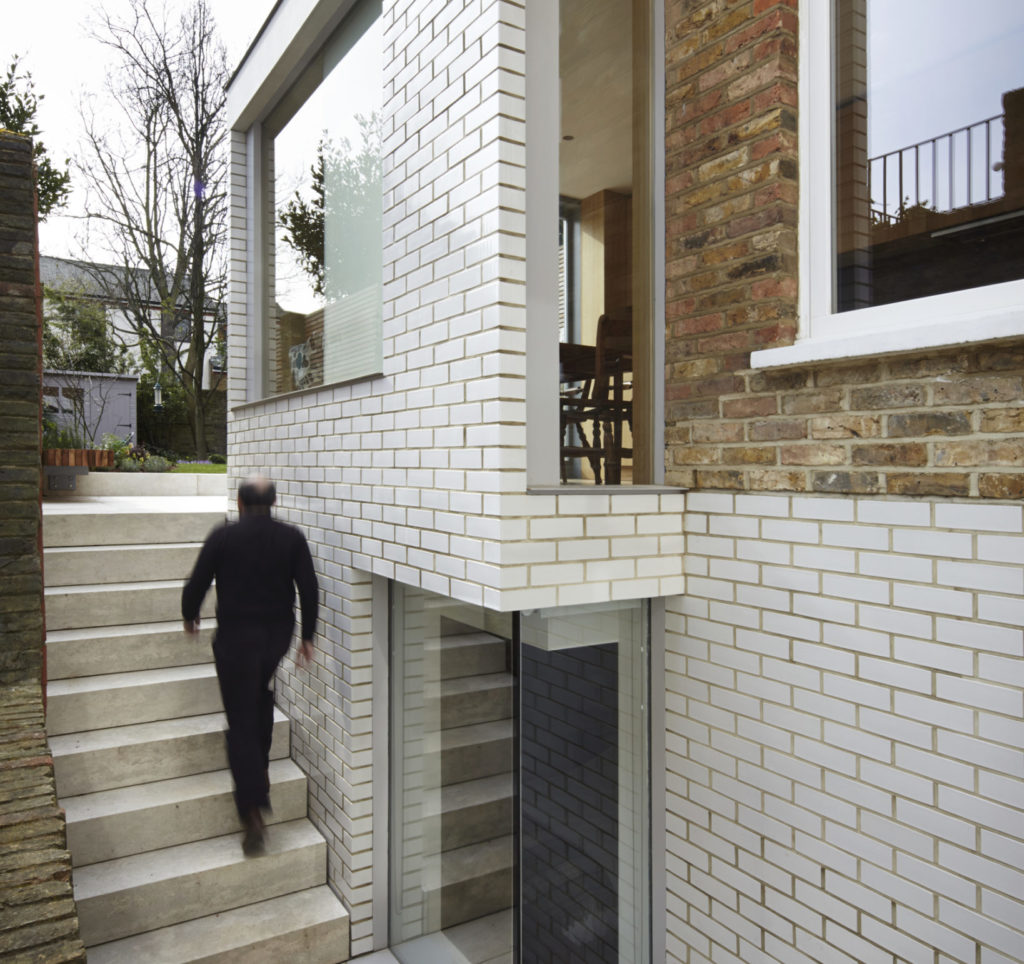
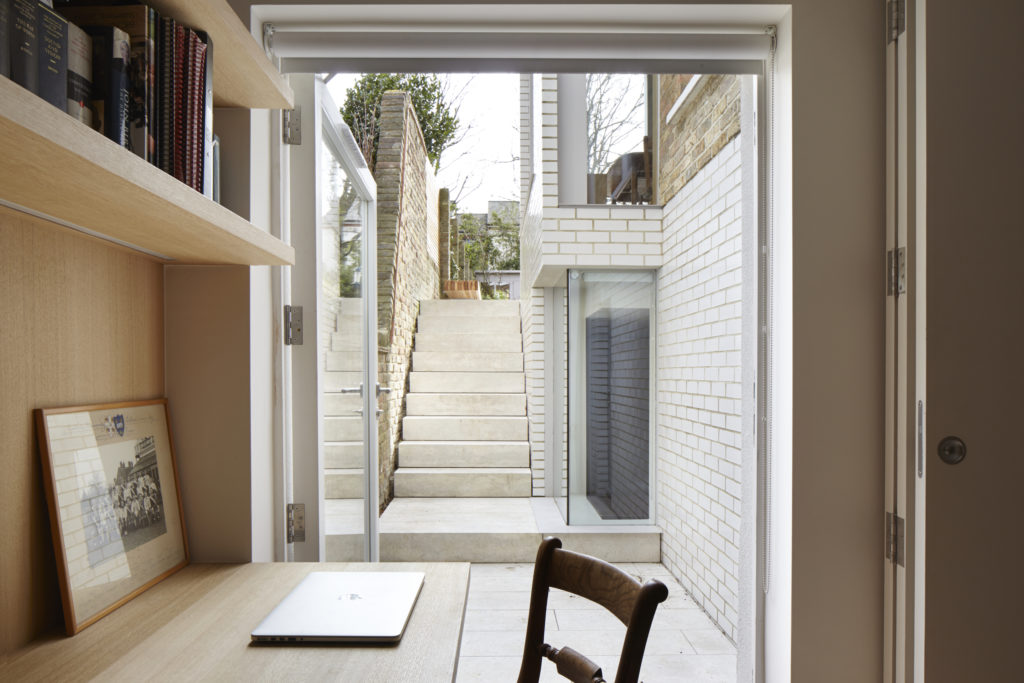
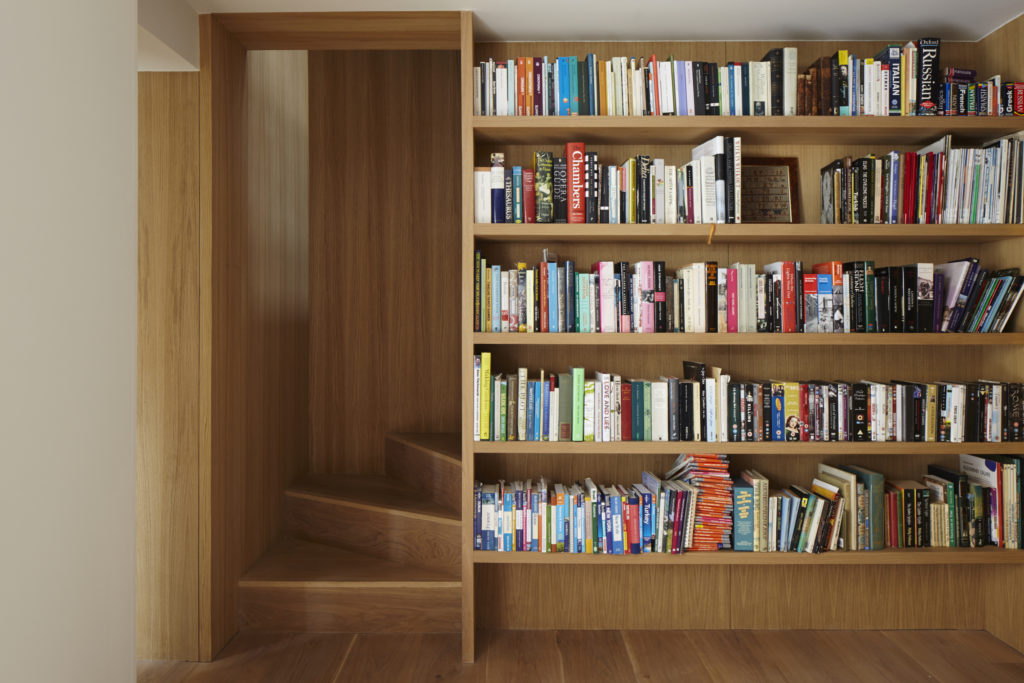 Brooksby by Llowarch Llowarch Architects, London, United Kingdom
Brooksby by Llowarch Llowarch Architects, London, United Kingdom
Llowarch Llowarch Architects clad a sensitive addition to a Grade II listed apartment in white brick, creating additional space for a bathroom, bedroom, and office. Immediately adjacent to the garden, light wooden cabinetry in the renovated kitchen ricochets light into the interior. For the below-ground office, floor-to-ceiling glass windows help to maximize natural light. The project was shortlisted for the 2015 Brick Awards refurbishment category.
Call for entries: The 14th Architizer A+Awards celebrates architecture's new era of craft. Apply for publication online and in print by submitting your projects before the Main Entry Deadline on December 12th!
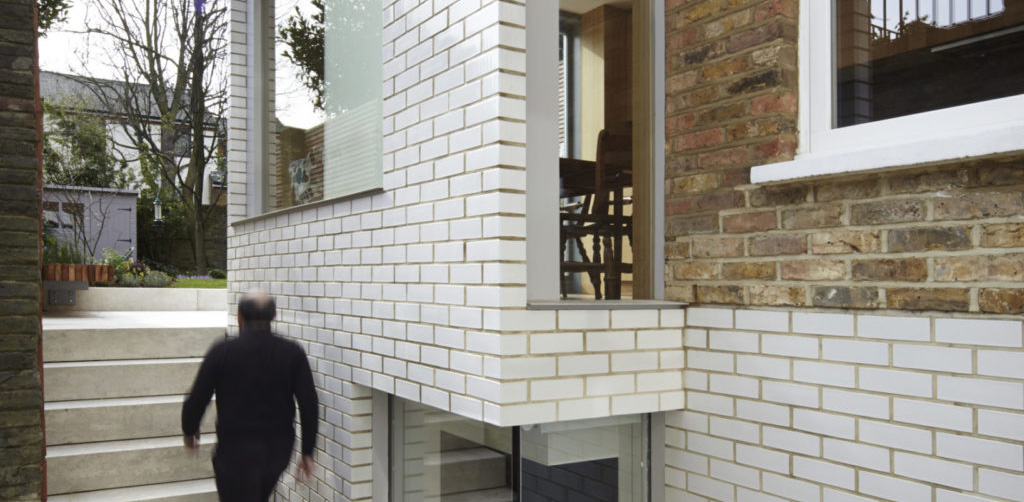
 Brooksby
Brooksby  Darling Square North
Darling Square North  Finn House
Finn House  HS Residence
HS Residence  Logements Monfleuri social housing
Logements Monfleuri social housing  Waratah Bay House
Waratah Bay House 